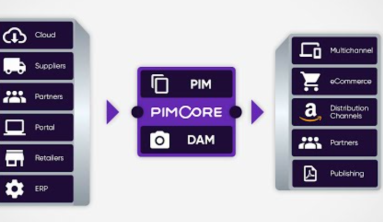
If you work in IT, you’ve probably heard of homegrown solutions. These are programing solutions that are written and created in-house to do a particular task. Perhaps your department uses homegrown solutions themselves. They are most supported by network engineers that need to solve a problem both quickly and on their own. While homegrown tools can be inexpensive and customizable, they are often riddled with bugs, hard to maintain and may not do everything you’re looking for. If you or your department currently implements a homegrown solutions tool, ask yourself these important questions:
- When is the last time it broke?
- How long was it down?
- Why did it go down?
- How did this affect your productivity?
- Can you afford for it to go down again?
When an organization uses a homegrown tool, they entangle themselves into a trap. Maybe at the beginning of the tool’s creation it worked and employees had confidence in it. However, as the company grows the tool begins to function less effectively as it used to. The IT professionals are then stuck with an outdated solution that is underperforming. Costs associated with these tools that were created in-house can be wasted time and money for paying the experts to manage the tool. While customizable and free, homegrown solutions are not the solutions IT departments should have.
Professional Solutions Save You Money in the Long Run
Why should you switch from a homegrown solution to a professional product? The professional product will save you money in the long run. Enterprises have skilled experts monitoring the network. A free tool may seem like the best option, but those skilled workers cost a significant price to employ. It is in the interest of many companies to have all IT personnel ready and able to run the network using this professional solution, without the need to hire a specific network engineer or the cost of retraining the existing IT staff. Expert salaries are not the only cost that can be saved with professional products. Network outages are detrimental to companies, and the severity of damage can be unpredictable. Companies need to be able to trust that their tool is reliable. If the network goes down, and the homegrown solution was not up for the task then that is the IT professional’s job on the line. Professional network analytics tools are rigorously tested for perfection, and are guaranteed to not let the IT professional down. Most professional products include 24/7 support as well, so they can confidently solve the issue. Homegrown solutions cannot offer this level of support. If an IT department uses an in-house solution, the only assistance they might have is an online community forum. However this community has limited experience whereas enterprises have entire support teams that have tremendous experience working with a variety of issues your department may face that are ready to assist at anytime.
Homegrown Solutions Struggle To Integrate New Devices
It is no surprise that new technology is on the rise in this era of digital transformation. Enterprises are constantly upgrading dated technology, and this can be daunting if they use homegrown solutions. While the digital world is quickly changing with the integrations and new technology, homegrown solutions struggle to keep up. Solutions are often written and tailored for a specific problem. Throughout the course of the company’s digital transformation that problem may evolve. An in-house solution cannot adapt to an evolving problem, likely because the problem the company is facing is more complex than what the solution was written for. Another factor that can be time consuming is the frequent introduction of new devices. IT professionals with professional tools wait for their tool to integrate new devices on it’s own or from the help of the service provided with it. But a professional with an in-house solution is on their own. Manually integrating new devices or creating a new tool for these new devices can waste the IT professional’s time, and create more issues down the road. One way to avoid this headache is to upgrade to an enterprise solution. Professional products provide updates for new device integration, so IT professionals can focus on what matters.
The Complexity of Homegrown Tools
With every new hire there is a learning curve, even in the same industry. Homegrown solutions can create an even bigger learning curve, especially when it is complex or the individual that created it is not involved. Teaching a new hire a complex tool wastes time and energy, and in some cases costs money. Professional solutions are often accompanied by training sites and informational materials that cut down on the severity of the learning curve.
While in-house solutions can be difficult to understand, they can also be difficult to use. Often times homegrown solutions do not have features such as reporting, a task that can be incredibly time consuming. IT environments are fast-paced, and transcribing a report wastes time when decisions must be made quickly. When too much time is spent on outdated and under performing solutions that were built in-house not enough time is spent doing the tasks that actually matter.
In-house politics often add to the complexity surrounding homegrown tools. The too could have been written and created by a higher-up, and perhaps that higher up is adamant about keeping the solution. Only the IT professional can truly elaborate on the effectiveness of the homegrown tool, however at the end of the day, network performance must be the priority. If the tool is under performing and unreliable then it must be replaced by something more effective, regardless of who initially created it. The politics surrounding homegrown tools must be eradicated for the betterment of the company.
We live in a world of upgrading. If there is a better seat available on the plane, we take it. A better table at a restaurant? We take it. So why settle with a homegrown tool that does not have all of the features that a professional solution has? While free is without a doubt positive, there is no excuse for keeping outdated and under performing technology. Enterprise solutions are the most effective tool for IT needs. Monitoring your network is a big job, leave it to the professionals. Don’t think of it as replacing your homegrown tool, think of it as an upgrade.






